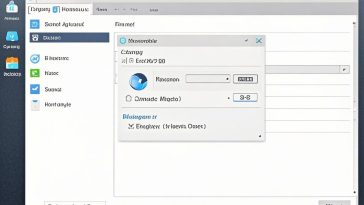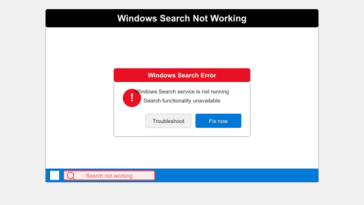Introduction to MLA Format
MLA (Modern Language Association) format is a citation style widely used in academic writing, particularly in the humanities and liberal arts disciplines. It provides a standardized way to document sources and ensure proper attribution of ideas and information. MLA format is essential when writing research papers, essays, and other academic works to avoid plagiarism and maintain academic integrity.
When to use MLA format
MLA format is typically used in fields such as literature, language, cultural studies, and other related disciplines. It is the preferred citation style for many instructors and publishers in these areas.
Importance of following citation styles
Following a consistent citation style like MLA is crucial for several reasons:
- It ensures that your sources are properly credited, allowing readers to locate and verify the information you’ve used.
- It demonstrates your research skills and attention to detail, which are highly valued in academic writing.
- It establishes a level of professionalism and adheres to academic standards, which can positively impact your grades and credibility as a writer.
Setting Up MLA Format in Word
Before you begin writing your document, it’s essential to set up the proper formatting in Microsoft Word to ensure compliance with MLA guidelines.
Changing the document margins
In MLA format, the document margins should be set to 1 inch on all sides (top, bottom, left, and right). Here’s how to change the margins in Word:
- Go to the “Layout” tab in the ribbon.
- Click on the “Margins” button and select “Normal” from the drop-down menu. This will set the margins to 1 inch on all sides.
Alternatively, you can specify custom margin settings:
- Go to the “Layout” tab and click on the “Margins” button.
- Select “Custom Margins” from the drop-down menu.
- In the “Margins” dialog box, enter “1” in the “Top,” “Bottom,” “Left,” and “Right” fields.
- Click “OK” to apply the changes.
Setting the line spacing
MLA format requires double-spacing throughout the entire document, including the Works Cited page. Here’s how to set the line spacing in Word:
- Select all the text in your document by pressing “Ctrl + A” (Windows) or “Command + A” (Mac).
- Go to the “Home” tab in the ribbon and locate the “Paragraph” group.
- Click on the line spacing icon (it looks like four horizontal lines) and select “2.0” from the drop-down menu.
Alternatively, you can use the keyboard shortcut:
- Select all the text in your document by pressing “Ctrl + A” (Windows) or “Command + A” (Mac).
- Press “Ctrl + 2” (Windows) or “Command + 2” (Mac) to set the line spacing to double.
Choosing a readable font and font size
MLA format recommends using a legible font, such as Times New Roman or Arial, with a 12-point font size for the main text. Here’s how to change the font and font size in Word:
- Select the text you want to modify.
- Go to the “Home” tab in the ribbon and locate the “Font” group.
- Click on the font drop-down menu and select either “Times New Roman” or “Arial.”
- Adjust the font size by clicking on the font size drop-down menu and selecting “12.”
Alternatively, you can use keyboard shortcuts:
- Select the text you want to modify.
- Press “Ctrl + Shift + >” (Windows) or “Command + Shift + >” (Mac) to increase the font size, or “Ctrl + Shift + <” (Windows) or “Command + Shift + <” (Mac) to decrease the font size until you reach 12-point.
- Press “Ctrl + D” (Windows) or “Command + D” (Mac) to change the font to the default font (usually Times New Roman or Arial).
Formatting the First Page
The first page of your MLA-formatted document should include specific elements, such as a header, running head, and properly formatted title.
Creating a header
A header in MLA format includes your last name and the page number, aligned to the right side of the page. Here’s how to create a header in Word:
- Go to the “Insert” tab in the ribbon and click on the “Header” button.
- Select “Blank” from the drop-down menu to create a new header.
- In the header area, type your last name and press the spacebar once.
- Go to the “Home” tab and click on the “Page Number” button.
- Select “Current Position” and then “Plain Number” from the drop-down menu.
- The page number and your last name should now appear in the header area.
- Double-click outside the header area to return to the main document.
Inserting a running head
A running head is a shortened version of your paper’s title that appears in the header of every page. It should be no more than 50 characters, including spaces. Here’s how to insert a running head in Word:
- Go to the “Insert” tab in the ribbon and click on the “Header” button.
- Click on “Edit Header” to edit the existing header.
- In the header area, type the running head and align it to the left side.
- Double-click outside the header area to return to the main document.
Formatting the title
The title of your paper should be centered and formatted in standard capitalization (capitalizing the first letter of each word, except for articles, prepositions, and conjunctions). Here’s how to format the title in Word:
- Type your title and press “Enter” to move to a new line.
- Select the title text.
- Go to the “Home” tab and click on the “Center” alignment button.
- Capitalize the title correctly by manually adjusting each word or using the “Change Case” feature in the “Font” group.
Formatting the Body Text
The body of your MLA-formatted document should follow specific guidelines for indentation and in-text citations.
Indenting paragraphs
In MLA format, the first line of each paragraph should be indented 0.5 inches from the left margin. Here’s how to indent paragraphs in Word:
- Place your cursor at the beginning of the paragraph you want to indent.
- Go to the “Home” tab and locate the “Paragraph” group.
- Click on the “Increase Indent” icon (it looks like a right-facing arrow).
Alternatively, you can use the keyboard shortcut:
- Place your cursor at the beginning of the paragraph you want to indent.
- Press the “Tab” key once to indent the paragraph.
Creating in-text citations
In-text citations are used to give credit to the sources you’ve used in your paper. MLA format has specific guidelines for creating parenthetical and narrative citations. Here’s how to create in-text citations in Word:
Parenthetical citations
Parenthetical citations are placed at the end of a sentence and include the author’s last name and the page number(s) where the information was found.
Example: (Smith 42)
To insert a parenthetical citation in Word:
- Type the closing punctuation for the sentence (usually a period).
- Press the spacebar once and type an opening parenthesis.
- Type the author’s last name, followed by a space.
- Type the page number(s), followed by a closing parenthesis.
Narrative citations
Narrative citations include the author’s name as part of the sentence, followed by the page number(s) in parentheses.
Example: According to Smith (42), the theory suggests…
To insert a narrative citation in Word:
- Type the author’s name as part of the sentence.
- Press the spacebar once and type an opening parenthesis.
- Type the page number(s), followed by a closing parenthesis.
Formatting the Works Cited Page
The Works Cited page in MLA format lists all the sources you’ve cited in your paper. It should be formatted according to specific guidelines and include all necessary information for each source type.
Creating the Works Cited page
The Works Cited page should start on a new page, with the heading “Works Cited” centered at the top. Here’s how to create the Works Cited page in Word:
- Place your cursor at the end of your document and press “Enter” to start a new page.
- Type “Works Cited” and press “Enter.”
- Select the text “Works Cited.”
- Go to the “Home” tab and click on the “Center” alignment button.
Organizing sources
Alphabetizing sources
To alphabetize the sources in your Works Cited list:
- Select all the sources by dragging your cursor over them or pressing “Ctrl + A” (Windows) or “Command + A” (Mac).
- Go to the “Home” tab and click on the “Sort” button in the “Paragraph” group.
- In the “Sort Text” dialog box, ensure that “Text” is selected under “Sort by,” and “Ascending” is selected under “Order.”
- Click “OK” to sort the sources in alphabetical order.
Formatting different source types
The formatting of each source entry in the Works Cited list depends on the type of source (book, journal article, website, etc.). Here are some common examples:
Books
Format: Last Name, First Name. Title of Book. Publisher, Publication Date.
Example: Austen, Jane. Pride and Prejudice. Penguin Classics, 2003.
Journal Articles
Format: Last Name, First Name. “Title of Article.” Journal Name, Volume, Issue, Year, Pages.
Example: Zhao, Xin. “The Ethics of Environmental Policies.” Environmental Ethics, vol. 42, no. 3, 2020, pp. 215-234.
Websites
Format: Last Name, First Name. “Title of Web Page.” Website Name, Publication or Revision Date, URL.
Example: Cullen, Lisa Townsend. “Employment Interview Tools and Resources.” Purdue OWL, 28 Apr. 2022, owl.purdue.edu/owl/job_search_writing/interviewing.
To format different source types in your Works Cited list, refer to the official MLA Handbook or online resources for specific guidelines on each type. Pay close attention to elements like italicization, capitalization, punctuation, and the order of information.
Additional Tips and Resources
Checking for errors
Even after carefully following the MLA format guidelines, it’s essential to proofread your document for any errors or inconsistencies.
Using Word’s built-in spelling and grammar checker
Word’s spelling and grammar checker can help identify some errors, but it may not catch all MLA-specific issues.
- Go to the “Review” tab in the ribbon.
- Click on the “Spelling & Grammar” button to initiate the checking process.
- Word will highlight potential errors, and you can choose to ignore or correct them.
Manually proofreading for MLA format errors
In addition to using Word’s tools, it’s recommended to manually proofread your document for MLA format errors, such as:
- Incorrect margins, line spacing, or font
- Inconsistent header or running head formatting
- Improperly formatted in-text citations
- Incorrect or missing information in the Works Cited entries
Online resources for MLA format help
If you need further assistance with MLA format, there are several reliable online resources available:
- MLA Style Center: The official website of the Modern Language Association, providing guidelines, instructions, and examples for MLA format (style.mla.org).
- Purdue OWL: The Online Writing Lab (OWL) at Purdue University offers a comprehensive MLA formatting and style guide (owl.purdue.edu/owl/research_and_citation/mla_style/mla_style_introduction.html).
- EasyBib: EasyBib provides citation guides, tools, and resources for various citation styles, including MLA (easybib.com/guides/citation-guides/mla-format/).
These resources can help clarify any questions or uncertainties you may have about MLA format and provide additional examples and explanations.
Conclusion
Following MLA format is crucial for academic writing and ensures proper attribution of sources, adherence to academic standards, and a professional presentation of your work. While it may seem daunting at first, with practice and the help of resources like this tutorial, you can master the intricacies of MLA format in Word.
Remember, formatting your document according to MLA guidelines not only demonstrates your attention to detail but also shows respect for the research and ideas of others. Don’t hesitate to seek additional help or guidance from your instructors, writing centers, or online resources if you encounter any difficulties or have specific questions.
By incorporating the techniques and guidelines outlined in this tutorial, you’ll be well-equipped to create MLA-formatted documents that meet academic standards and showcase your writing and research abilities effectively.






